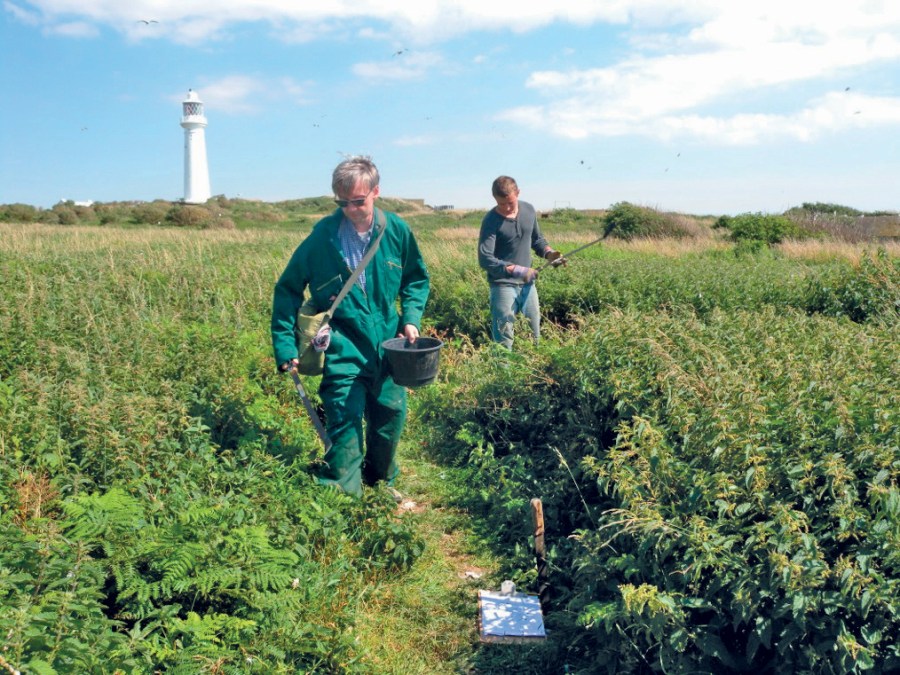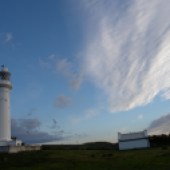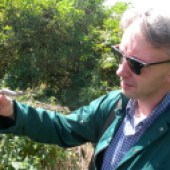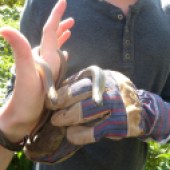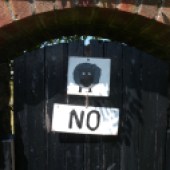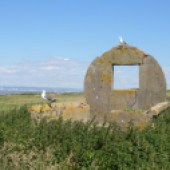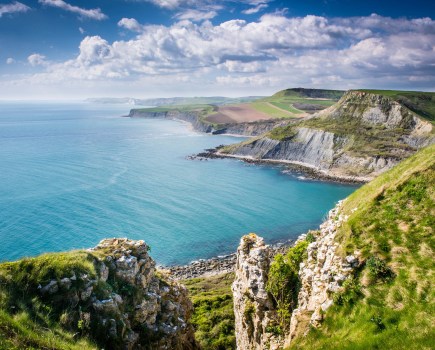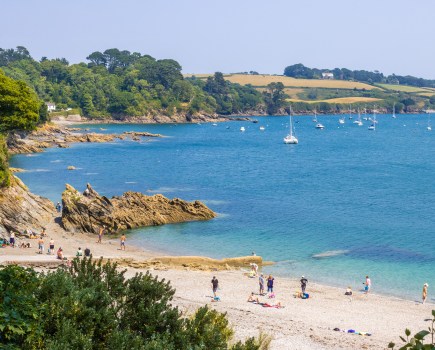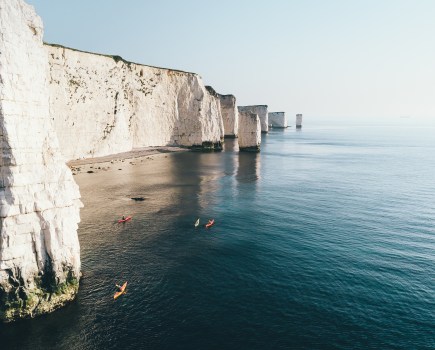Want to escape to a remote island and contribute to a worthy cause while you’re there? Then why not try your hand at island volunteering? Freelance writer David Atkinson spent a weekend as a conservation volunteer on Flat Holm Island near Cardiff Bay.
Volunteering breaks always sounded a bit beard and sandals. But, in recent years, the volunteer weekend has evolved to combine practical life skills with upscale facilities and the company of like-minded people.
If your New Year’s resolution is to reconnect with nature, then a weekend is an ideal toe in the water. For a microcosm climate and a sea air-fuelled escape, try one of the hidden-gem islands dotted around the UK coastline. Organisations such as the National Trust offer a range of volunteer opportunities and people need no previous experience to take part.
Flat Holm Island (Ynys Echni in Welsh) is a great place to begin. The 56-acre island in the British Channel is a Site of Special Scientific Interest (SSSI) and has been managed by the Flat Holm Project since 1982. The island recently introduced short volunteer breaks, including new winter breaks over Christmas and New Year, and even opened a small pub last summer for a post-work sundowner. Some smart new accommodation, the Keeper’s Cottage, is now available with more home comforts in a rural Shangri-La setting.
DAY ONE
10.30AM Meet, brief and exhibition
Following the 45-minute boat crossing from Penarth Marina, Cardiff, we start our visit to Flat Holm with a short briefing and a chance to look round the historical exhibition at the Education Centre. The earliest-known visitor to the island was Saint Cadoc in the sixth century. He came in search of meditation and brought medicinal herbs. The island has been a place of historical and natural importance ever since.
11AM Island tour
Peter Sampson of the Flat Holm Society – a group of volunteer enthusiasts – leads a short, guided tour of the limestone-forged island. Members of the colony of Lesser Black Backed Gulls swoop overhead as we wander the grassy trails, passing Victorian barracks and the island’s solar-powered lighthouse. In the centre of the island is a monument to mark the centenary of the Italian inventor Guglielmo Marconi sending the first radio message across water. The message from Flat Holm on May 13, 1897, reads: Are you ready? We are – to roll up our sleeves and get stuck in.
2PM Slow worm survey
After a spot of bonding over lunchtime cheese sandwiches and coffee with my five fellow volunteers, it’s down to work.
First task: the monthly slow worm survey. ‘They’re legless lizards and not, like everyone thinks, actually snakes,’ says fellow volunteer and recent environmental biology graduate Sarah Lewis, from Cardiff.
Slow worms are well represented on Flat Holm but the slow worm monitoring stations are often hidden by dense overgrowth. We hack away the scrub with machetes and uncover the stations, each marked with a white pole. We have to sex the worms (females have twin black stripes down their sides) at each of the 16 stations and record the data.
5PM Dinner
It’s back to the farmhouse for a quick cuppa before starting to cook dinner for the group. On the way, I’m introduced to Wonky the friendly ram, who loves nuzzling up to new volunteers. I rustle up a bubbling pot of spaghetti Bolognese, which is devoured hungrily by the group.
8PM Pub and chat
It’s time for a pint at the Gull and Leek, the island’s one-room pub. Well, it is Friday night and mine’s a Cwrw Braf from the Tomos Watkin’s brewery in Swansea. There’s also time to chat with the wardens and volunteers over a beer before an early night.
Day two
8AM Feeding time
I’ve actually been awake since 6am thanks to Feathers, the very vocal cockerel, who patrols the wild-flower garden outside the dormitory. But the day starts properly with a pre-breakfast jaunt around the animal enclosures for feeding time. I administer fresh water and feed pellets to the Black Rock chickens and Indian Runner ducks. Later in the day, we’ll need to give the Black Welsh Mountain sheep their sheep nuts.
10AM Weather checks
I head across to the weather station for the daily check on conditions for the Met Office with head warden Matt Lipton, who began his own conservation career as a volunteer. I check the thermometers and assess the visibility within 30 miles to the Severn Bridge. Afterwards, we welcome a group of day visitors arriving at East Beach and take them to the Education Centre for a health and safety briefing. Matt warns them not to touch the island’s rare wild leeks. There’s a £1,000 fine if you pick this protected species.
12pm Fence-building
The last major task is building an electric fence to pen the sheep on the more managed north side of the island. This will encourage them to graze the grass down and leave the maritime grassland. I help fellow volunteer Jamie McEwan from Glasgow, who recently completed a degree in zoology at the University of St Andrews, to hammer posts into the ground. We then wrap wire around the posts to charge from a portable generator. ‘It’s been very hands-on but I’ve picked up a lot of practical skills,’ says Jamie, who has visited several times over six months.
It may have been my first visit, and my conservation skills still need honing, but I’ve now got a real taste for The Great Outdoors.
The Flat Holm Project flatholmisland.com offers residential weekends for volunteers from March to October, priced at £19pppn for hostel accommodation (£8 for camping) and £5 for day visits.
Originally published in the February 2013 issue of Coast
Need to know
What you need to get started
Visit the website of the Countryside Jobs Service (countryside-jobs.com), which has a section on volunteering. The National Trust, Wildlife Trust and the Conservation Volunteers are also useful. Island locations around the UK offer a greater sense of escape, but boat services often stop between October and March. For a taster, get involved with the Marine Conservation Society’s Beachwatch (mcsuk.org), and take part in year-round beach cleans and surveys.
What it costs
Prices vary between projects and transport costs are not always covered. A low-key weekend with communal meals and dormitory accommodation is relatively inexpensive (less than £40 per night full board), but you shouldn’t expect too many home comforts. Remember to take a sleeping bag and a well-stocked sponge bag, as well as a willingness to muck in with the group. It would also be a good idea to bring along a medical kit.
Where to stay
Dormitory accommodation in ten-bed rooms on Flat Holm Island is simple but homely. The new Keeper’s Cottage offers three-star self-catering with two double bedrooms, two bathrooms, a lounge and dining room. Pop next door to the foghorn station to see the early 20th-century machinery for the foghorn and lighthouse. There are longer-term plans to turn this into a working museum. Cottage hire starts from £350 per weekend (sleeps four) but you need to bring your own supplies.
Ask the pros
Sam Whitfield, Assistant Conservation and Heritage Warden on Flat Holm, studied ecology at Cardiff University ‘I love all seasons here — the blue-sky days, the raging storms. Cardiff is just five miles away but I have a totally different lifestyle. Things go wrong, of course, so improvisation is part of the job. It’s been a learning curve for me, both dealing with livestock and the island’s bird colony. This year, I was in charge of lambing – I delivered 51 lambs. It was a month of total exhaustion but hugely rewarding.’
Some other islands you can volunteer on:
Fair Isle (Shetland)
Why to go there
Spot seals, whales and dolphins during summer.
How you can help
On the week-long Thistle Camps, you can help with painting, fencing and even sheep-shearing.
Cost
Around £220pp, including bunkhouse accommodation and meals. You must make your own way to Grutness on Shetland, which is accessible by plane or ferry from Aberdeen or Orkney.
When
Spring through summer. Make applications from January via the National Trust for Scotland nts.org.uk/thistlecamps.
Calf of Man (northwest England)
Why go there
The islet, off the southwest coast of the Isle of Man, is a bird observatory and the original home of the Manx Shearwater.
How can you help
Volunteers are needed throughout winter to help eradicate the non-native brown rats from the island.
Cost
None for a one- to two-week commitment. Dormitory accommodation, a small allowance for food and transport are included.
When
From December to March or later. Book via the Manx Wildlife Trust www.manxwt.org.uk.

